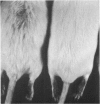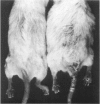Abstract
Seven strains of mice were closely observed during the development of amyloidosis in the absence of experimental manipulation except for alteration in group and cage sizes. Amyloid development was greatest in the strains showing the most evident effects of wounding from fighting activity. In groups fighting extensively, up to a 100% incidence of generalized amyloidosis was reached in submissive mice. Groups of female mice did not fight and only developed amyloidosis in association with infection. The occurrence of amyloidosis correlates with the chronic anemia and splenomegaly long known to attend submissive social standing within groups of male mice. Dominant mice were uniformly spared wounding, anemia, splenomegaly and amyloidosis as were singly caged mice. Amyloidosis appearing in the absence of experimental manipulation is a sequel of social submissiveness and consequent wounds.
Full text
PDF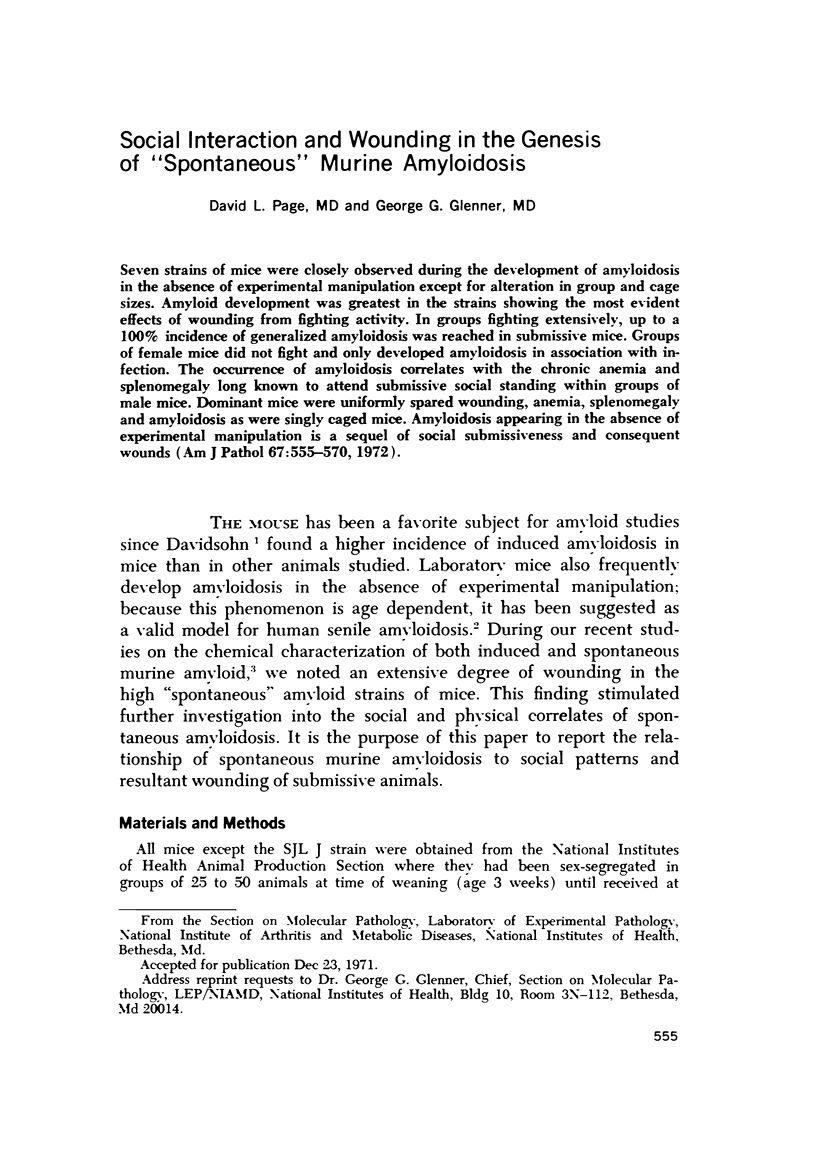
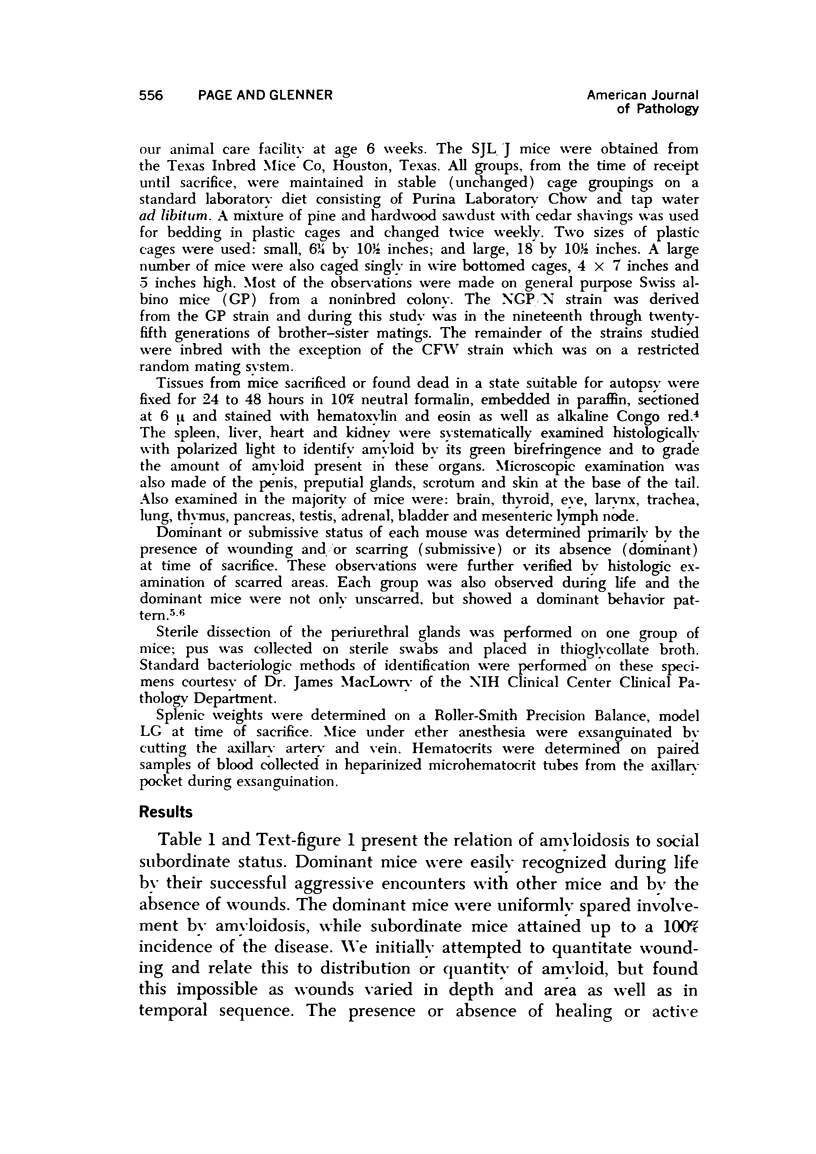
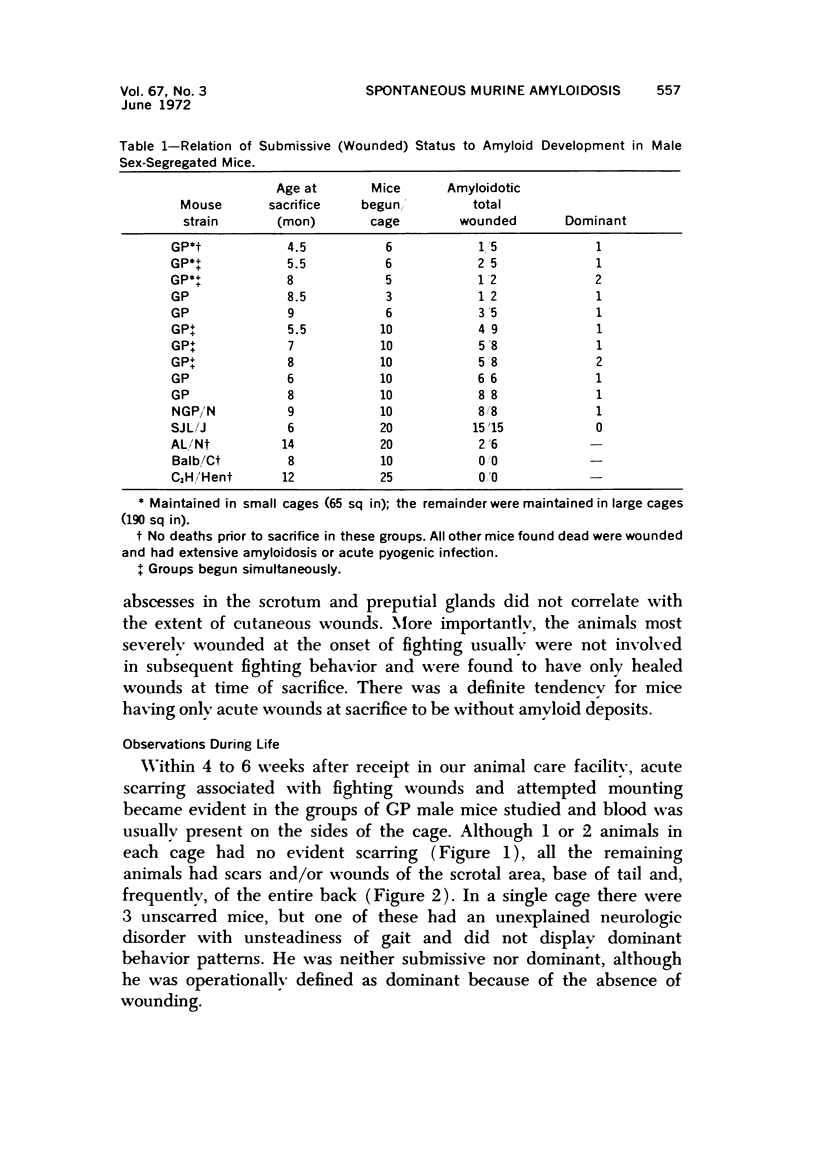
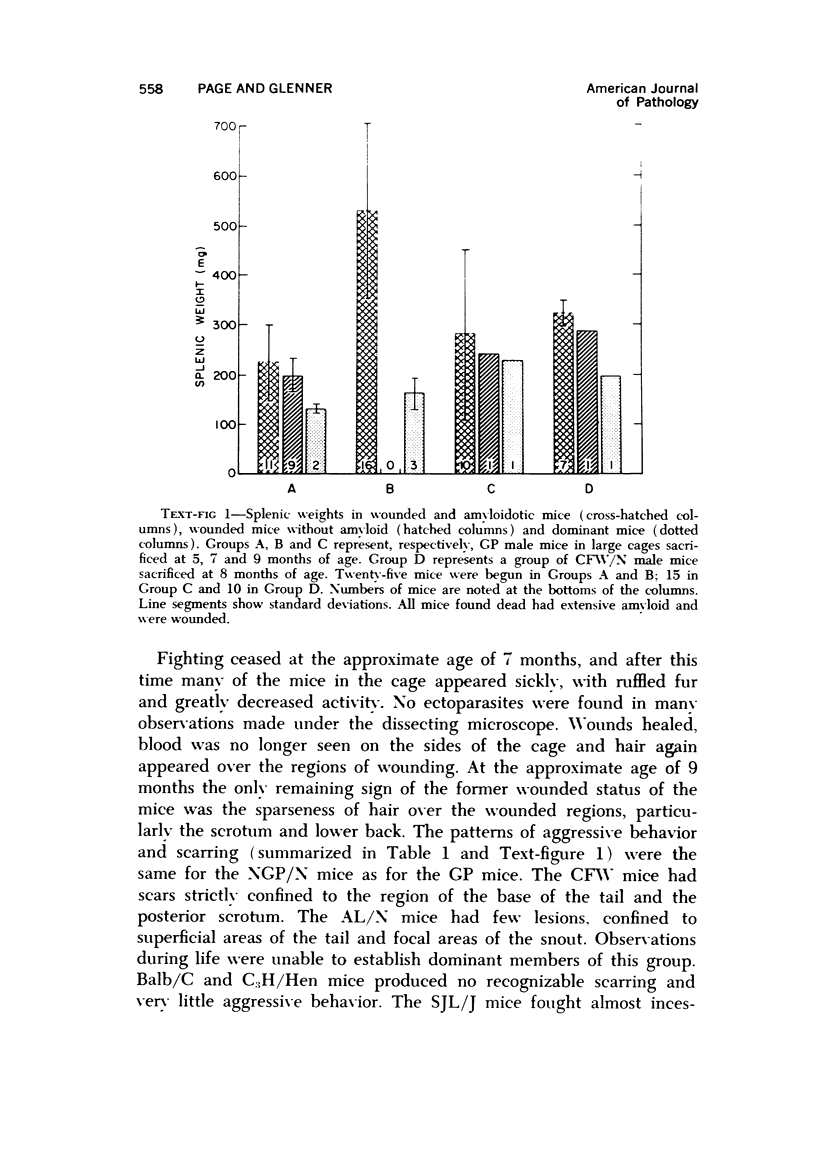
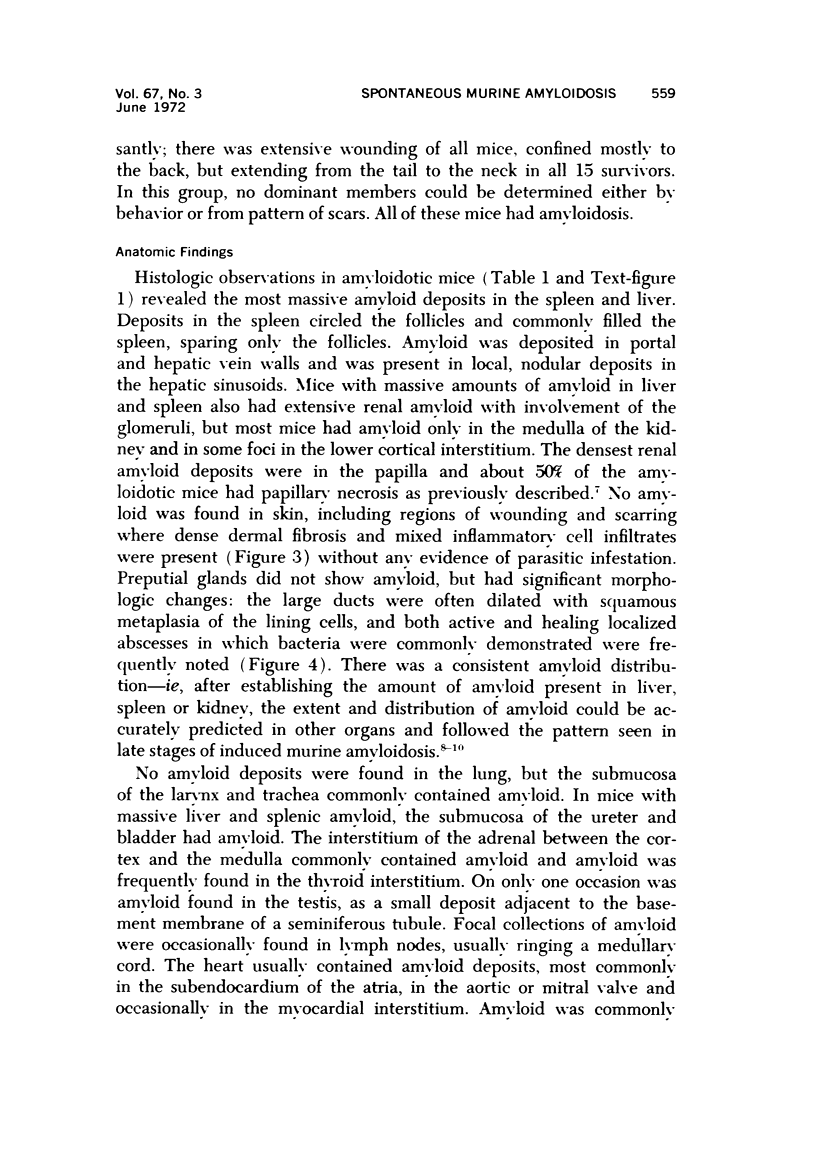
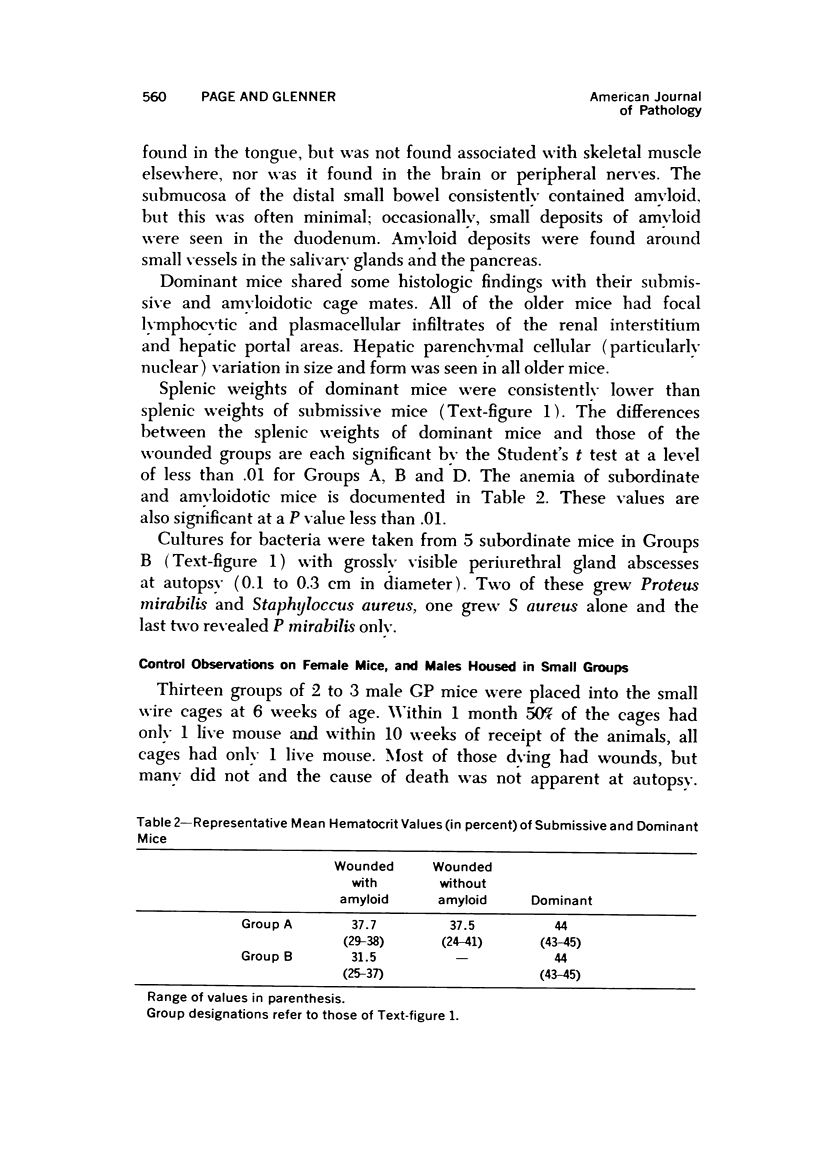
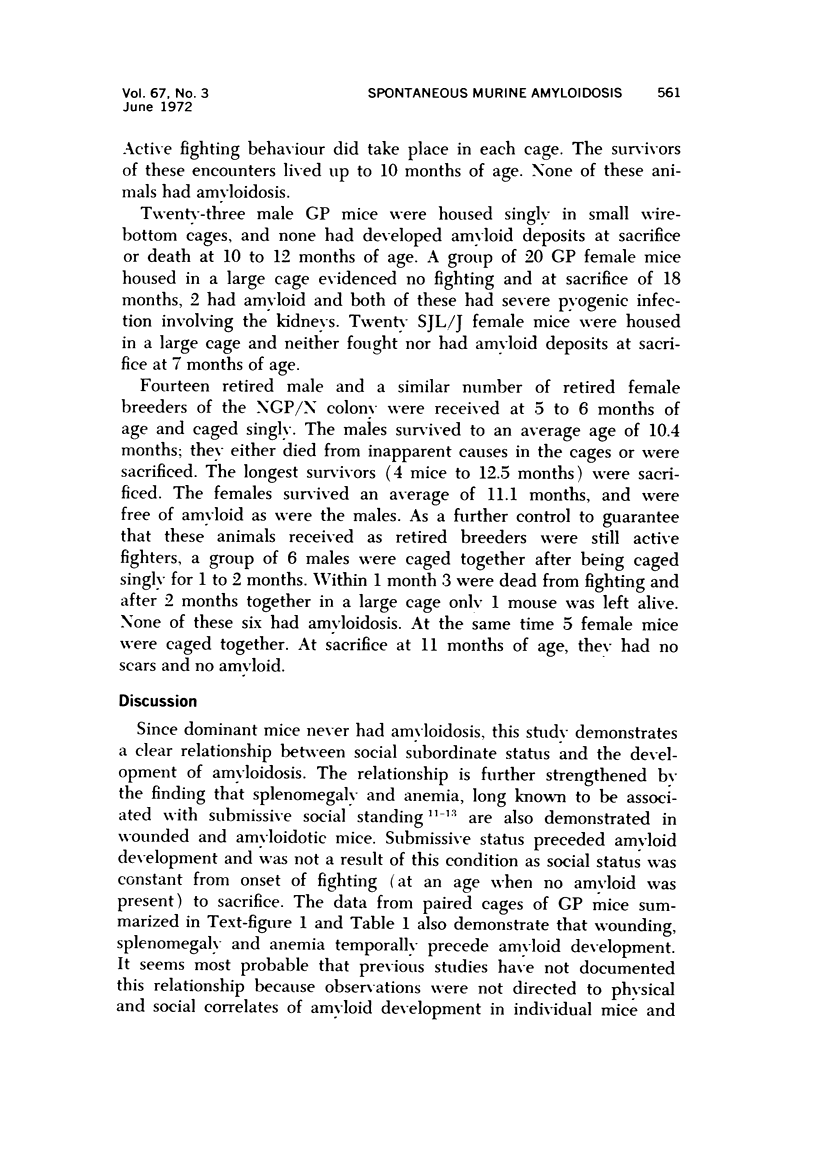
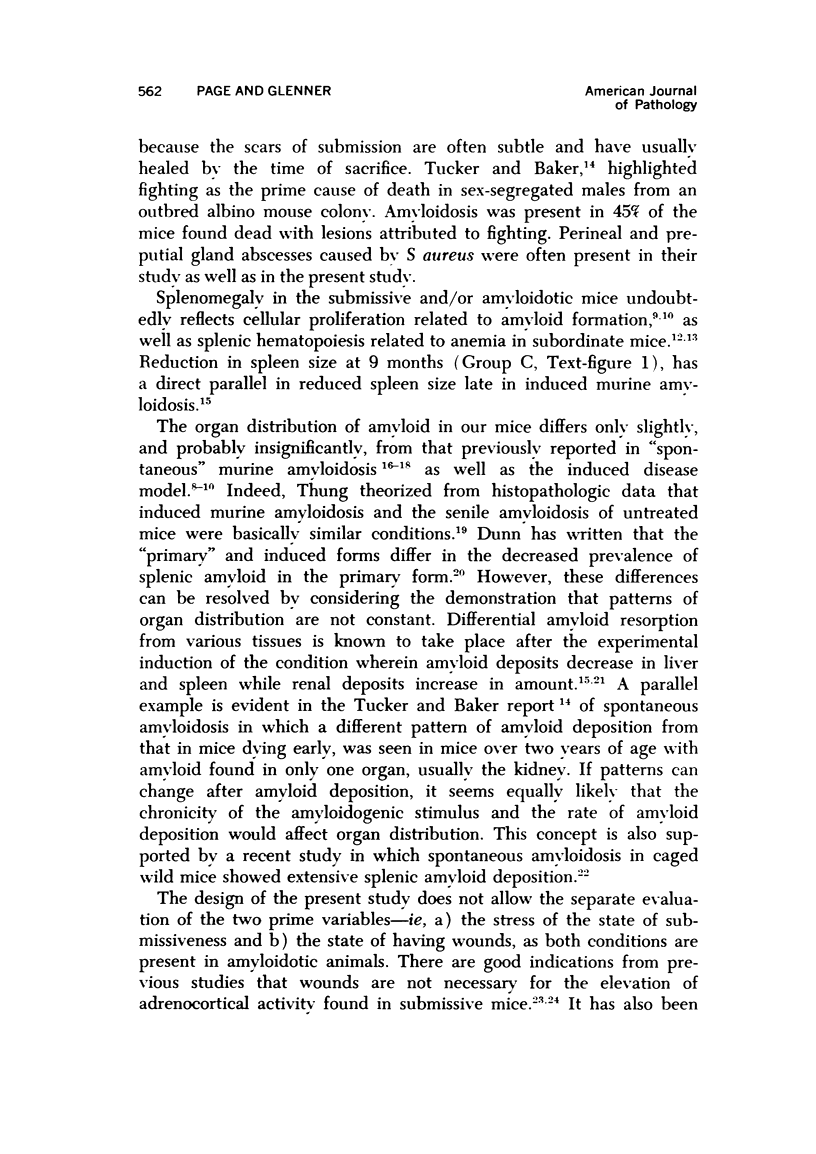
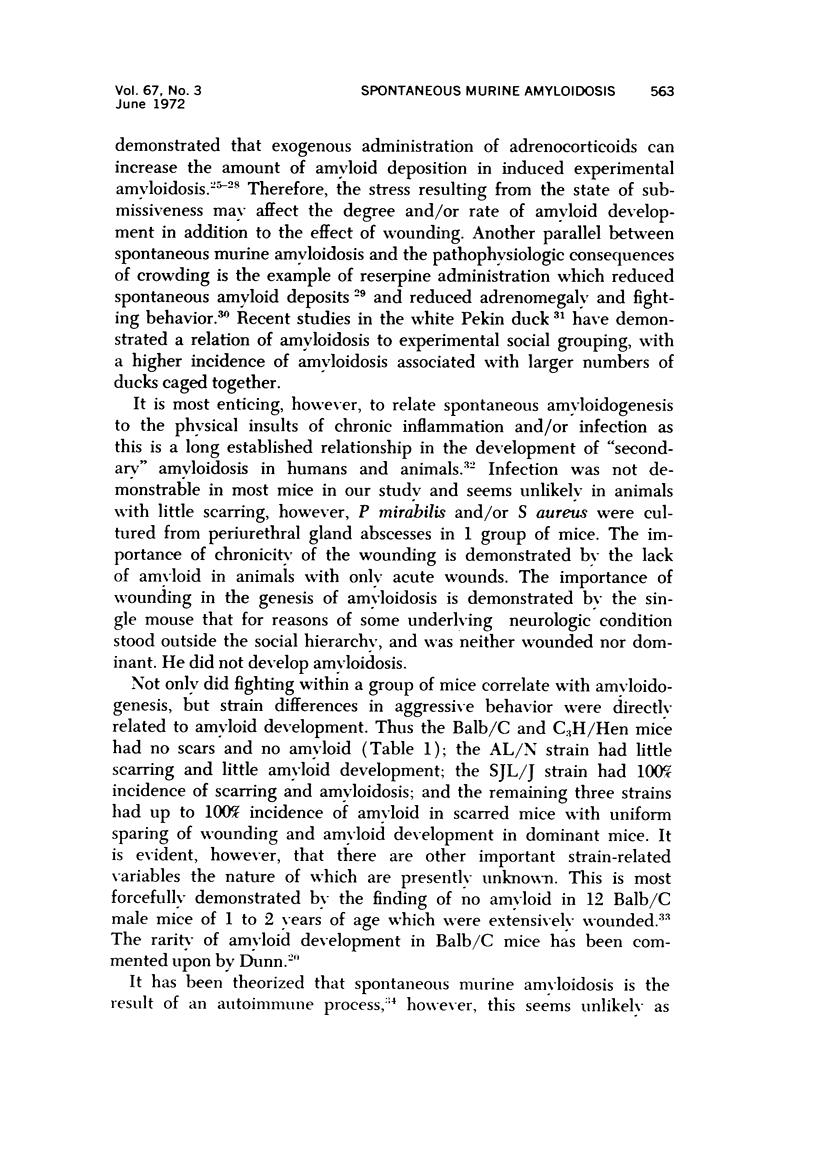
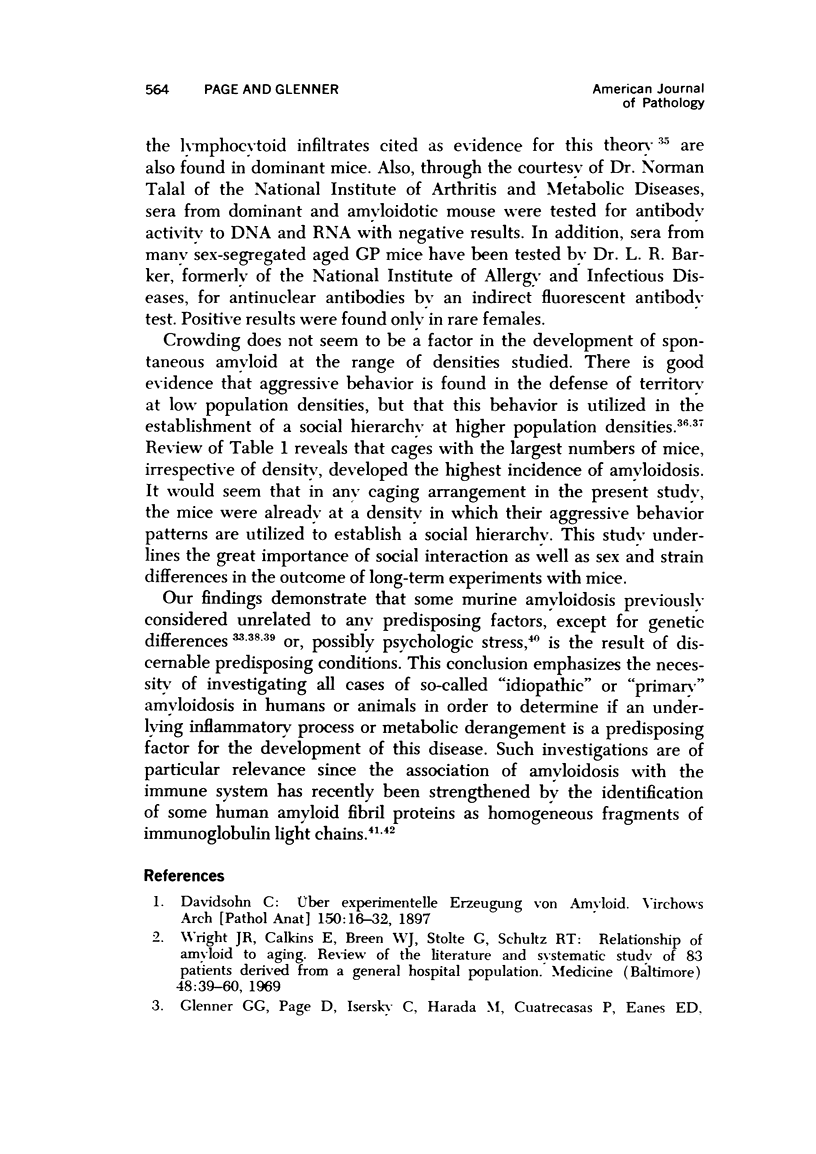
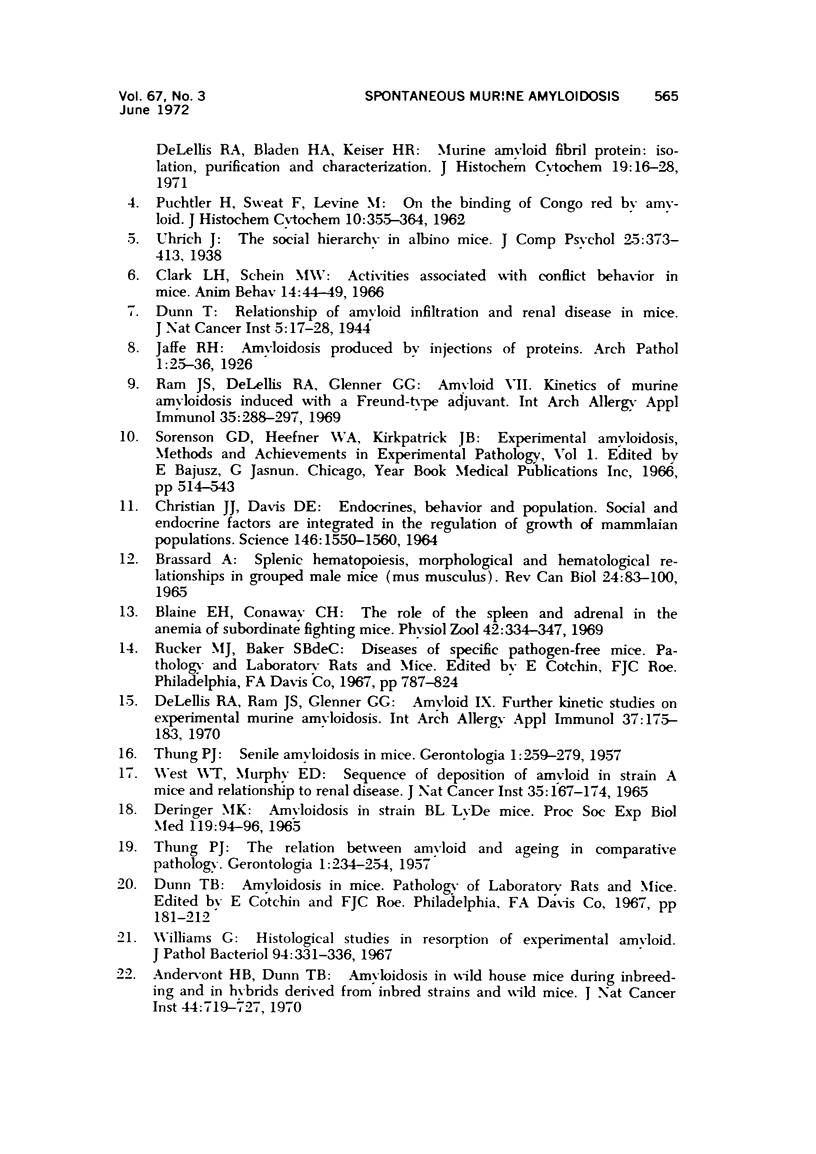
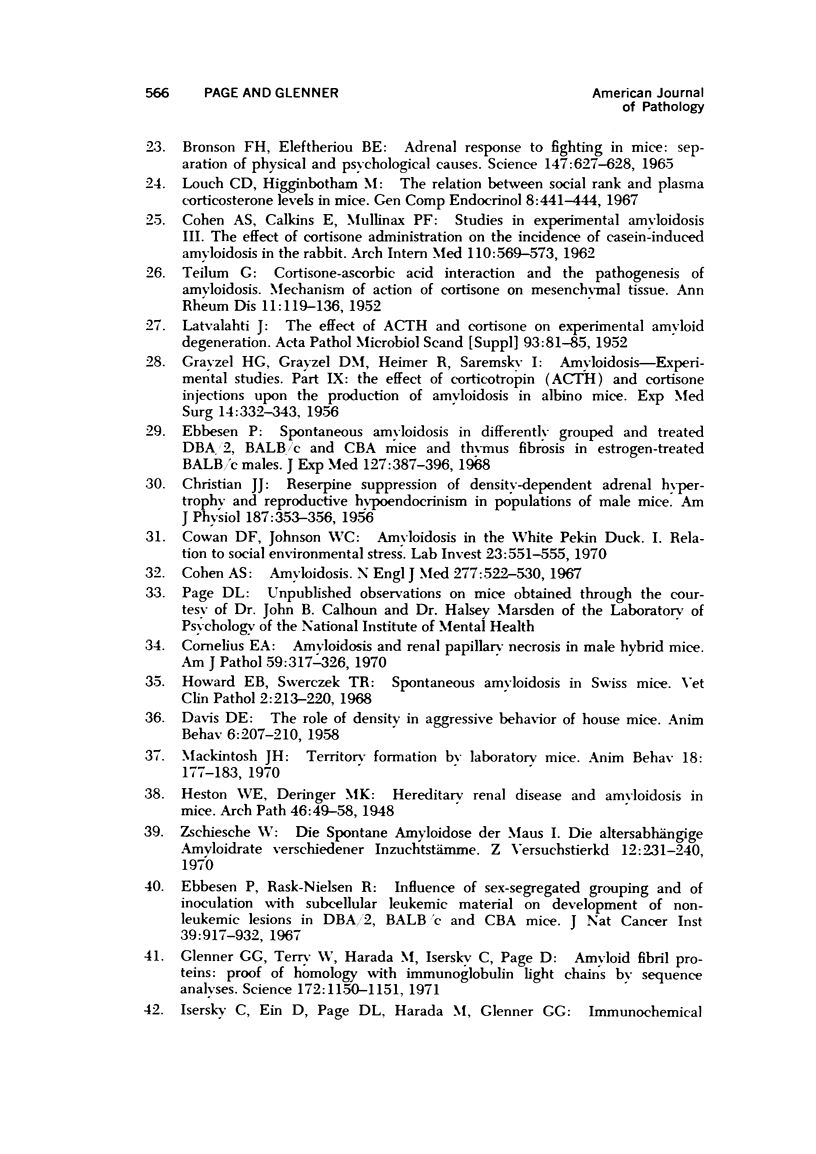

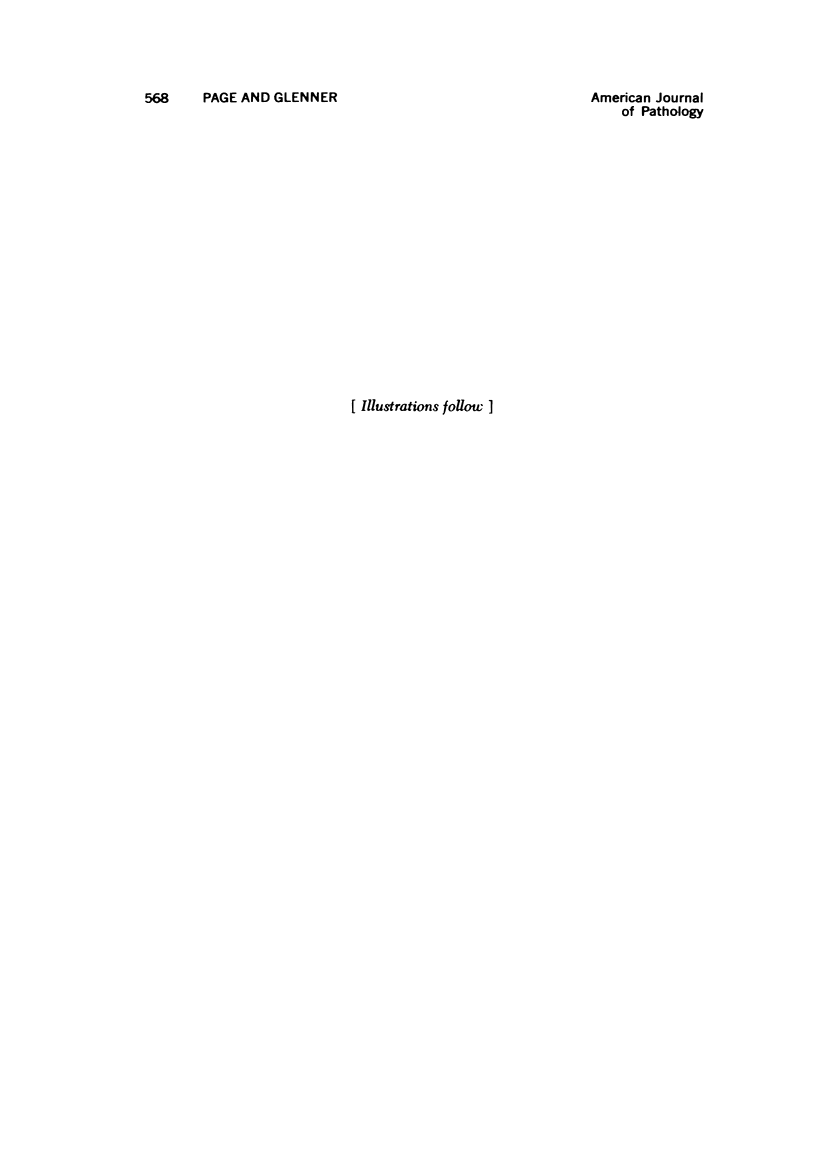
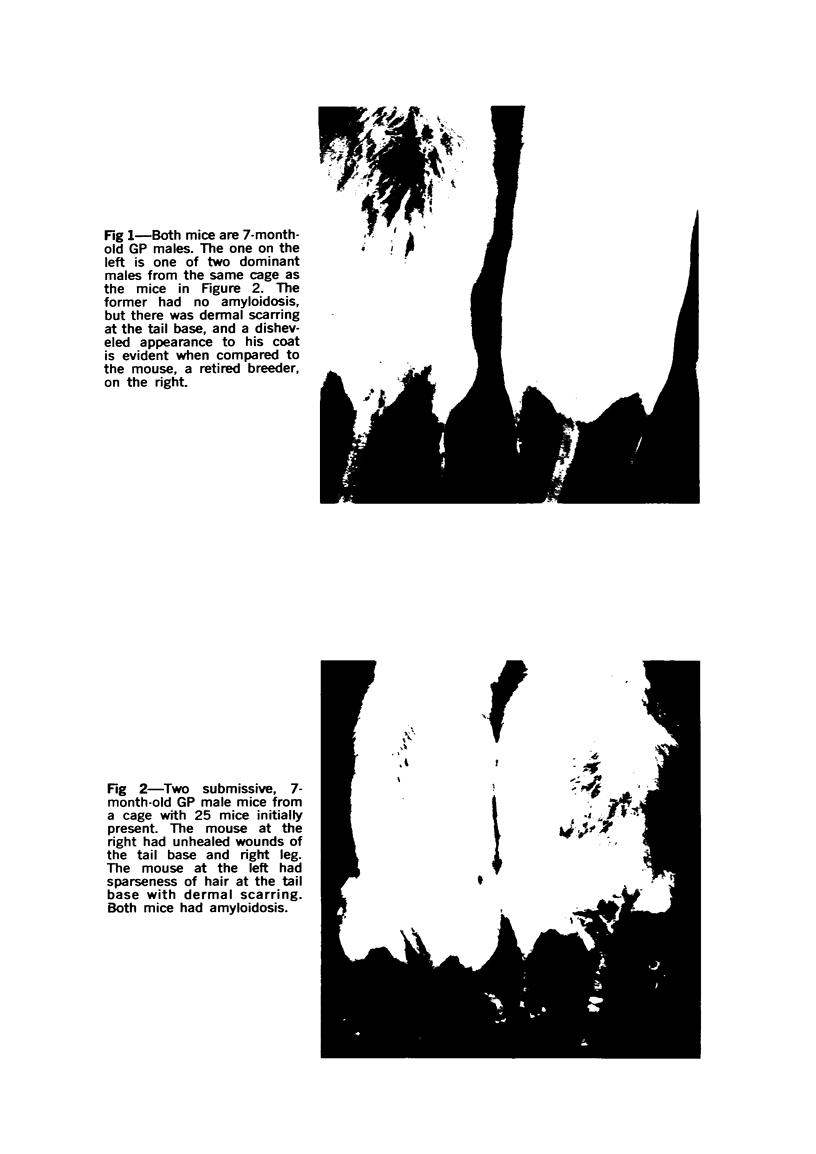
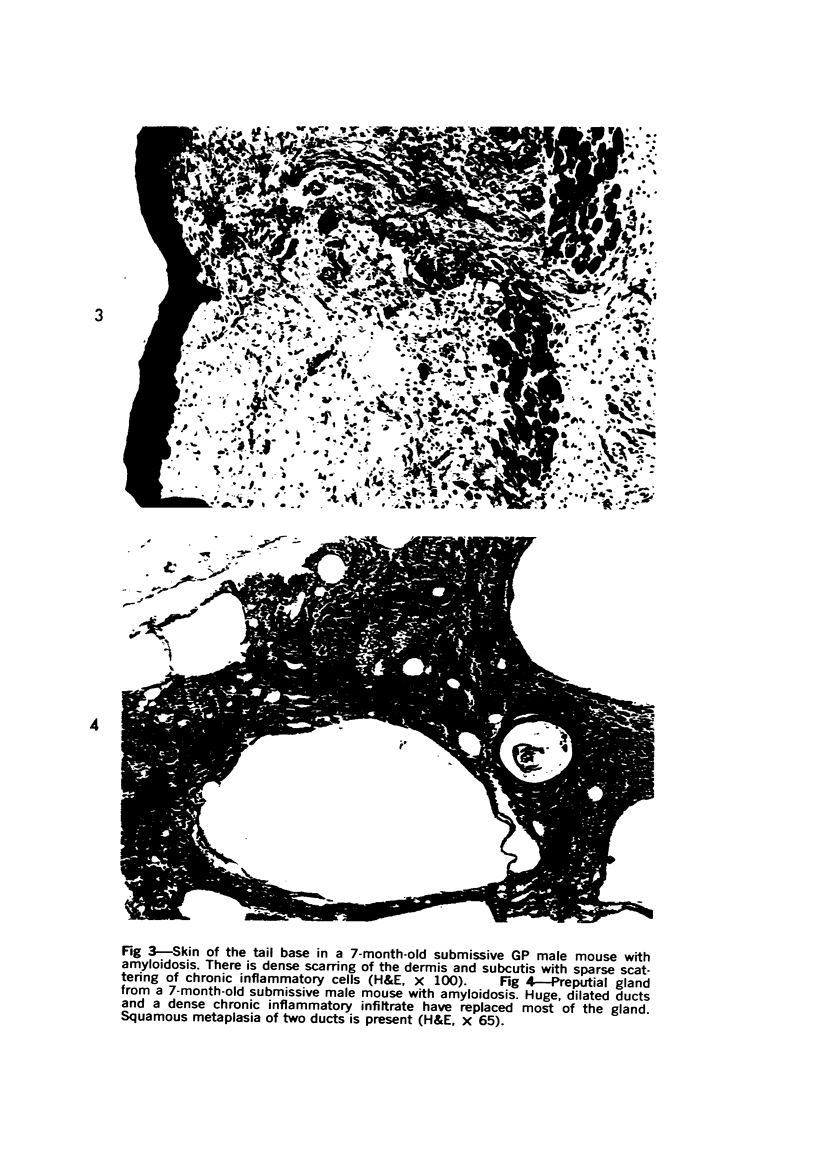
Images in this article
Selected References
These references are in PubMed. This may not be the complete list of references from this article.
- Andervont H. B., Dunn T. B. Amyloidosis in wild house mice during inbreeding and in hybrids derived from inbred strains and wild mice. J Natl Cancer Inst. 1970 Mar;44(3):719–727. [PubMed] [Google Scholar]
- BRONSON F. H., ELEFTHERIOU B. E. ADRENAL RESPONSE TO FIGHTING IN MICE: SEPARATION OF PHYSICAL AND PSYCHOLOGICAL CAUSES. Science. 1965 Feb 5;147(3658):627–628. doi: 10.1126/science.147.3658.627. [DOI] [PubMed] [Google Scholar]
- Brassard A. Splenic hematopoiesis, morphological and hematological relationships in grouped male mice (Mus musculus). Rev Can Biol. 1965 Jun;24(2):83–100. [PubMed] [Google Scholar]
- CHRISTIAN J. J., DAVIS D. E. ENDOCRINES, BEHAVIOR, AND POPULATION. Science. 1964 Dec 18;146(3651):1550–1560. doi: 10.1126/science.146.3651.1550. [DOI] [PubMed] [Google Scholar]
- CHRISTIAN J. J. Reserpine suppression of density-dependent adrenal hypertrophy and reproductive hypoendocrinism in populations of male mice. Am J Physiol. 1956 Nov;187(2):353–356. doi: 10.1152/ajplegacy.1956.187.2.353. [DOI] [PubMed] [Google Scholar]
- COHEN A. S., CALKINS E., FRANKLIN MULLINAX P. Studies in experimental amyloidosis. III. The effect of cortisone administration on the incidence of casein-induced amyloidosis in the rabbit. Arch Intern Med. 1962 Nov;110:569–573. doi: 10.1001/archinte.1962.03620230015004. [DOI] [PubMed] [Google Scholar]
- Clark L. H., Schein M. W. Activities associated with conflict behaviour in mice. Anim Behav. 1966 Jan;14(1):44–49. doi: 10.1016/s0003-3472(66)80009-x. [DOI] [PubMed] [Google Scholar]
- Cohen A. S. Amyloidosis. N Engl J Med. 1967 Sep 7;277(10):522–contd. doi: 10.1056/NEJM196709072771006. [DOI] [PubMed] [Google Scholar]
- Cornelius E. A. Amyloidosis and renal papillary necrosis in male hybrid mice. Am J Pathol. 1970 May;59(2):317–326. [PMC free article] [PubMed] [Google Scholar]
- Cowan D. F., Johnson W. C. Amyloidosis in the white Pekin duck. I. Relation to social environmental stress. Lab Invest. 1970 Nov;23(5):551–555. [PubMed] [Google Scholar]
- DERINGER M. K. AMYLOIDOSIS IN STRAIN BL-LYDE MICE. Proc Soc Exp Biol Med. 1965 May;119:94–96. [PubMed] [Google Scholar]
- DeLellis R. A., Sri Ram J., Glenner G. G. Amyloid. IX. Further kinetic studies on experimental murine amyloidosis. Int Arch Allergy Appl Immunol. 1970;37(2):175–183. [PubMed] [Google Scholar]
- Ebbesen P., Rask-Nielsen R. Influence of sex-segregated grouping and of inoculation with subcellular leukemic material on development of nonleukemic lesions in DBA/2, BALB/c, and CBA mice. J Natl Cancer Inst. 1967 Nov;39(5):917–932. [PubMed] [Google Scholar]
- GRAYZEL D. M., GRAYZEL H. G., HEIMER R., SAREMSKY I. Amyloidosis; experimental studies. IX. The effect of corticotropin (ACTH) and cortisone injections upon the production of amyloidosis in albino mice. Exp Med Surg. 1956;14(4):332–343. [PubMed] [Google Scholar]
- Glenner G. G., Page D., Isersky C., Harada M., Cuatrecasas P., Eanes E. D., DeLellis R. A., Bladen H. A., Keiser H. R. Murine amyloid fibril protein: isolation, purification and characterization. J Histochem Cytochem. 1971 Jan;19(1):16–28. doi: 10.1177/19.1.16. [DOI] [PubMed] [Google Scholar]
- Glenner G. G., Terry W., Harada M., Isersky C., Page D. Amyloid fibril proteins: proof of homology with immunoglobulin light chains by sequence analyses. Science. 1971 Jun 11;172(3988):1150–1151. doi: 10.1126/science.172.3988.1150. [DOI] [PubMed] [Google Scholar]
- LATVALAHTI J. The effect of ACTH and cortisone on experimental amyloid degeneration. Acta Pathol Microbiol Scand Suppl. 1952 Jun;93:81–85. [PubMed] [Google Scholar]
- Louch C. D., Higginbotham M. The relation between social rank and plasma corticosterone levels in mice. Gen Comp Endocrinol. 1967 Jun;8(3):441–444. doi: 10.1016/s0016-6480(67)80006-6. [DOI] [PubMed] [Google Scholar]
- Ram J. S., DeLellis R. A., Glenner G. G. Amyloid. VII. Kinetics of murine amyloidosis induced with a Freund-type adjuvant. Int Arch Allergy Appl Immunol. 1969;35(3):288–297. [PubMed] [Google Scholar]
- TEILUM G. Cortisone-ascorbic acid interaction and the pathogenesis of amyloidosis; mechanism of action of cortisone on mesenchymal tissue. Ann Rheum Dis. 1952 Jun;11(2):119–136. doi: 10.1136/ard.11.2.119. [DOI] [PMC free article] [PubMed] [Google Scholar]
- THUNG P. J. Senile amyloidosis in mice. Gerontologia. 1957;1(5):259–279. doi: 10.1159/000210704. [DOI] [PubMed] [Google Scholar]
- THUNG P. J. The relation between amyloid and ageing in comparative pathology. Gerontologia. 1957;1(4):234–254. doi: 10.1159/000210701. [DOI] [PubMed] [Google Scholar]
- West W. T., Murphy E. D. Sequence of deposition of amyloid in strain A mice and relationship to renal disease. J Natl Cancer Inst. 1965 Jul;35(1):167–174. doi: 10.1093/jnci/35.1.167. [DOI] [PubMed] [Google Scholar]
- Williams G. Histological studies in resorption of experimental amyloid. J Pathol Bacteriol. 1967 Oct;94(2):331–336. doi: 10.1002/path.1700940210. [DOI] [PubMed] [Google Scholar]
- Wright J. R., Calkins E., Breen W. J., Stolte G., Schultz R. T. Relationship of amyloid to aging. Review of the literature and systematic study of 83 patients derived rom a general hospital population. Medicine (Baltimore) 1969 Jan;48(1):39–60. [PubMed] [Google Scholar]



